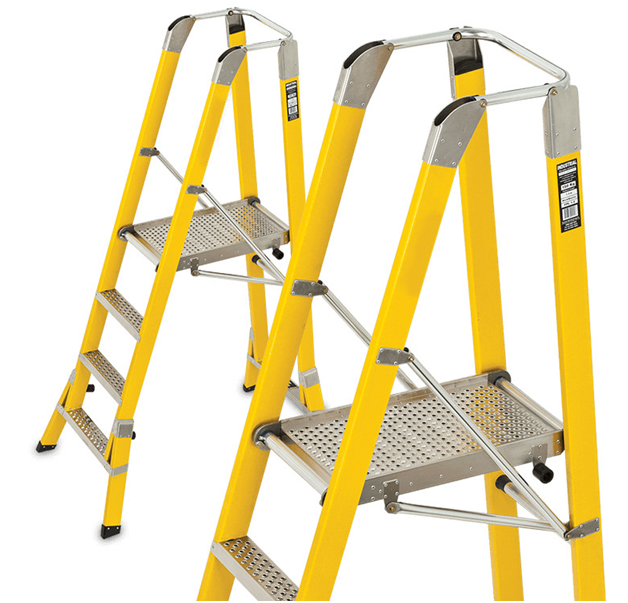How to check your ladder is safe before you use it
Before using a ladder, you should have access to user instructions from the manufacturer in case you need to refer to them.
You should always carry out a 'pre-use' check to spot any obvious visual defects to make sure the ladder is safe to use.
A pre-use check should be carried out:
- by the person using the ladder
- at the beginning of the working day
- after something has changed, eg a ladder has been dropped or moved from a dirty area to a clean area (check the state or condition of the feet)
The check should include:
- the stiles – make sure they are not bent or damaged, as the ladder could buckle or collapse
- the feet – if they are missing, worn or damaged the ladder could slip. Also check the ladder feet when moving from soft/dirty ground (eg dug soil, loose sand/stone, a dirty workshop) to a smooth, solid surface (eg paving slabs), to make sure the actual feet and not the dirt (eg soil, chippings or embedded stones) are making contact with the ground
- the rungs – if they are bent, worn, missing or loose, the ladder could fail
- any locking mechanism – does the mechanism work properly? Are components or fixings bent, worn or damaged? If so, the ladder could collapse. Ensure any locking bars are fully engaged
- the stepladder platform – if it is split or buckled, the ladder could become unstable or collapse
- the steps or treads on stepladders – if they are contaminated, they could be slippery; if the fixings are loose on the steps, they could collapse
If you spot any of the above defects, do not use the ladder and tell the person in charge of the work.



